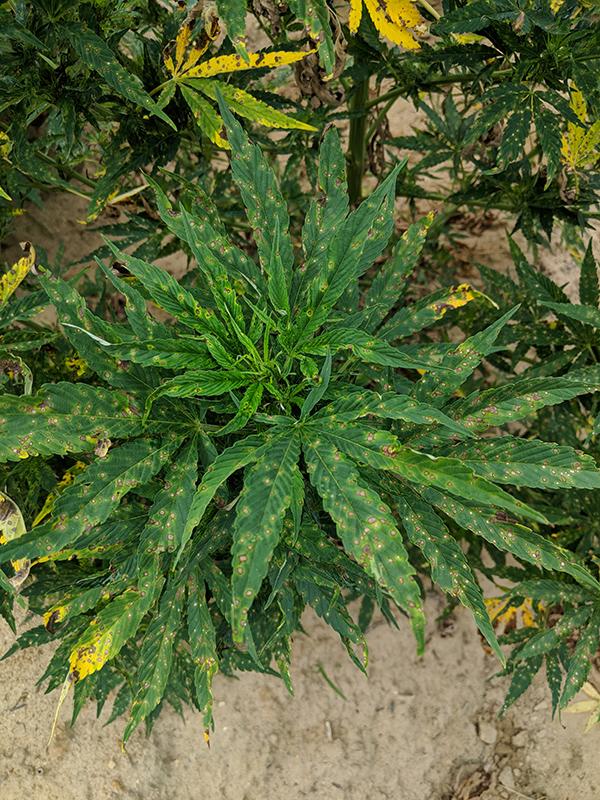
Credit: Lindsey D. Thiessen
As hemp begins to reemerge as an important crop in the United States, scientists are beginning research into the diseases that might prevent the crop from flourishing. A study published in the December issue of Plant Health Progress is one of the first to study the potential disease and disorder limitations for hemp production in the southeastern United States.
Lindsey Thiessen, a plant pathologist at North Carolina State University, worked with colleagues to evaluate hemp samples from North Carolina and observed 16 different diseases. They found Fusarium flower blight most consistently followed by Helminthosporium leaf spot. They also surveyed hemp producers who self-identified Fusarium species as the most common issue in their fields.
“Interestingly, diseases that are frequently reported in other hemp-producing regions in the western U.S. or worldwide, such as gray mold or powdery mildew, were not prominent diseases in our study,” said Thiessen.
The study also found nutritional deficiencies and toxicities in more than 58 percent of samples evaluated and identified issues with excess water, root binding, and herbicide injuries. All these issues may complicate production for growers in the southeastern United States and similar regions. This study also underscores regional variability of important diseases and disorders, showing that best production practices will vary by region.
“Little research on hemp has been recently conducted in the U.S., and this study identifies pathogens with molecular tools and morphology using more recent taxonomic classifications,” Thiessen said when asked what made this research unique. “This work also identifies the ranges of nutritional content in soil and foliar tissues of currently available hemp strains.”
Thiessen points out that while hemp used to be grown in the United States, many of the diseases have been understudied. This research, summarized in “Surveying for Potential Diseases and Abiotic Disorders of Industrial Hemp (Cannabis sativa) Production,” begins to build a new and important body of knowledge for this growing industry.
###
Media Contact
Ashley Bergman Carlin
[email protected]
Related Journal Article
http://dx.




